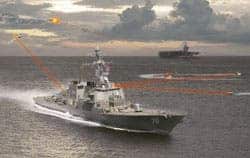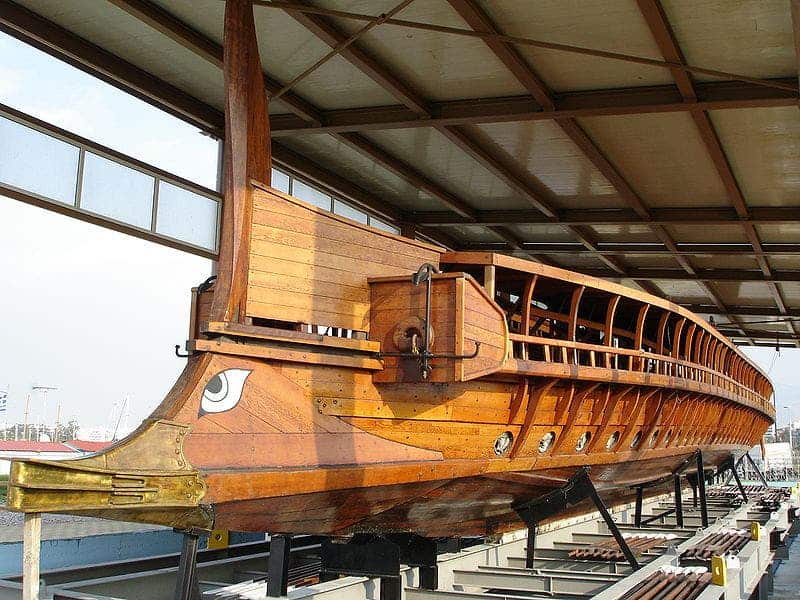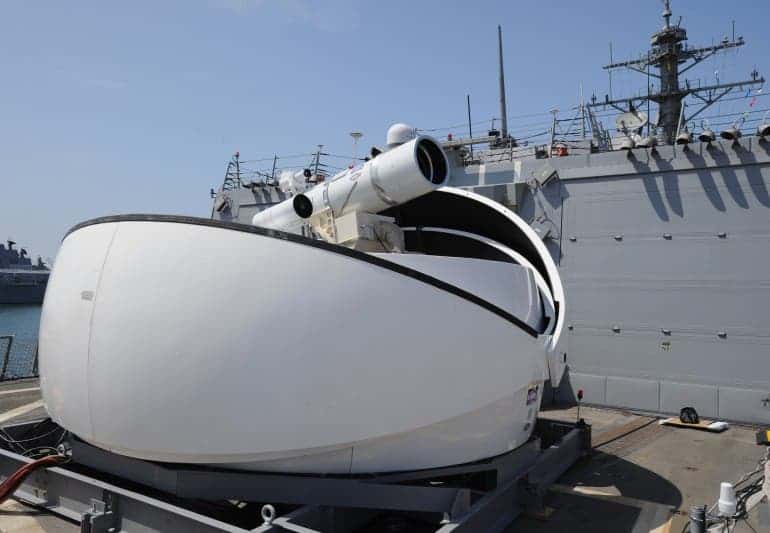
“This is the first time a HEL, at these power levels, has been put on a navy ship, powered from that ship and used to defeat a target at range in a maritime environment,” said Peter Morrison, program officer for the U.S. Office of Naval Research (ONR).
Other tests of solid state lasers for the Navy have been conducted from land-based positions. Having access to a HEL weapon will one day provide a warfighter with options when encountering a small-boat threat, Morrison said.
“The results show that all critical technologies for an operational laser weapon system are mature enough to begin a formal weapon system development program,” said Steve Hixson, vice president, space and directed energy systems at Northrop Grumman’s Aerospace Systems sector. “Solid-state laser weapons are ready to transition to the fleet.”
The eventual goal of the $98M USD Maritime Laser Demonstrator (MLD) is to install 100-kilowatt lasers on ships! Yes, this means in that in the not so distant future (2020ish), the navy is planning on developing war tech capable of cutting through 2,000 feet of steel per second and offering battle-sinking power in an instant.






